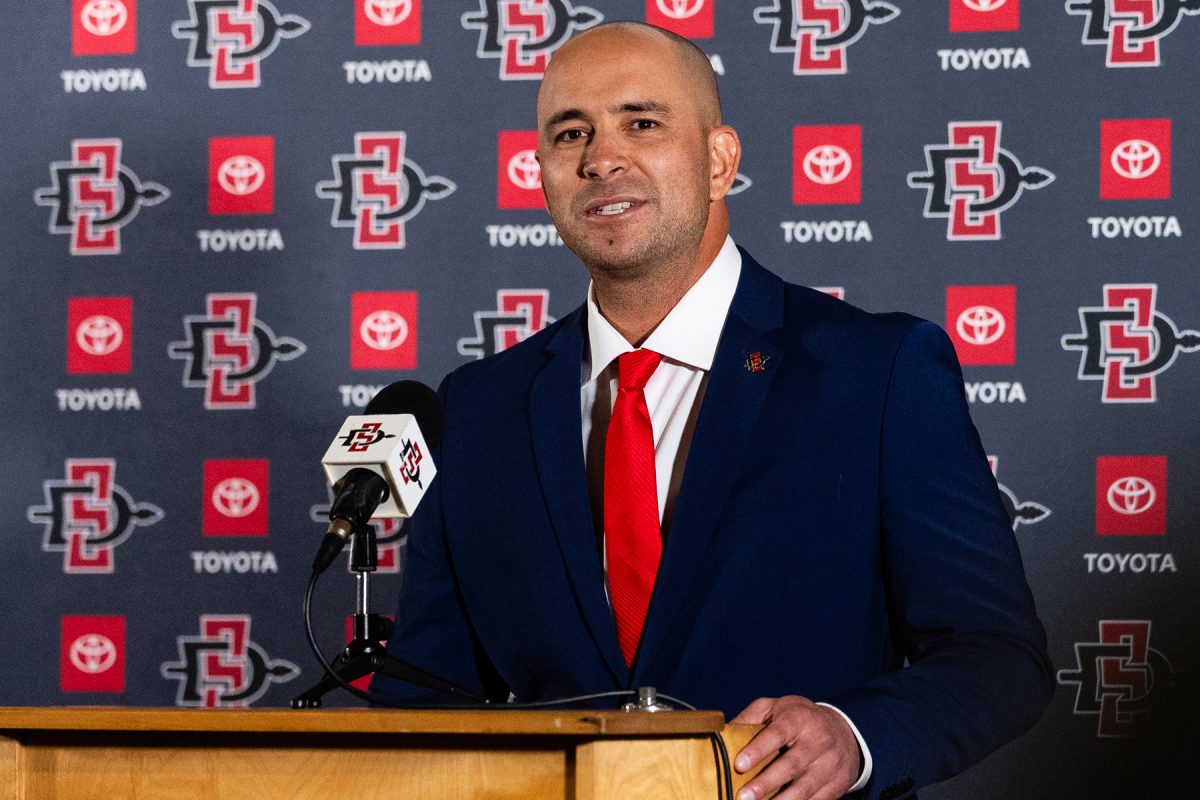For San Diego State men’s basketball junior guard Jeremy Hemsley, Twitter is more than just a way to pass the time.
With 10.5 thousand followers and official Twitter verification, @jeremy_hemsley uses the social media platform to build a professional brand and shape a platform for his voice.
He said he has been consciously doing since high school.
“I remember when I first got a thousand followers I was really hyped about it,” Hemsley said. “But I guess as your name gets bigger in basketball, the more your name is out there on social media, so I just try to use that to my advantage to make sure people are seeing my face or seeing the things that I’m saying.”
Hemsley has a dedicated following which interacts with him regularly on Twitter – one user even made a fan account, @Hemsleyville, which documents SDSU basketball – and Hemsley said he works hard to make sure his followers know they are appreciated.
“A lot of times in the relationship between fans and players, fans don’t feel like they can talk to players or that the players probably won’t reply,” he said. “So I try to make it where they can talk to me or they feel loved by whatever I’m saying. I’m not just a basketball player who’s ignoring what they’re saying, I want them to feel like I interact with them.”
But social media can be complicated for an NCAA Division I athlete, said Hemsley.
“I represent so many people, so of course you have to be mindful of the things you say,” he said. “I try to stay on the positive or brighter side of things because, because if I say something wild or negative, the next day somebody I don’t want to see it will probably see it.”
Hemsley said he sometimes watches professional athletes handle media situations via their online platforms, mostly to see what not to say in times of crisis.
But the distance from the fans and the greater-than-thou vibe of most pro athlete accounts has never been attractive to Hemsley.
“They make it seem like they’re so much better than someone who’s not playing the sport, so I try to level out the playing field to make it like we’re all the same,” he said. “I try to have more fun with things and I think that’s why people are drawn towards me. We’re not going to be here long. Just have fun with it.”
Hemsley’s original content on Twitter ranges from shoutouts to other campus athletes like SDSU football senior running back Rashaad Penny, prayers for Boston Celtics guard Gordon Hayward and grief over the October shootings in Las Vegas, to the “lighter side” inside jokes and good vibe updates.
Conscious of the personal brand he is trying to create, Hemsley said he wants to be accessible to fans, even when the comments strike a nerve.
Hemsley said that he understands where his followers are coming from, expressing disappointment or frustration after a game, because he too has been on that side of the keyboard, commenting on the performances of professional athletes.
“It is rough sometimes if you have a bad game and you come back and you see someone telling you all the things you did wrong,” he said. “But at the same time, everyone’s human and everyone has their own opinions, so I’m not going to get mad at someone for telling me how they feel.”
Although most of SDSU’s basketball players are on Twitter, none of them have the following that Hemsley does.
“I don’t they think realize what it can do or how they can use it to their advantage,” he said. “Playing basketball has put me on a platform. Say I’m talking about a topic that’s more on the serious side, I would like for my voice to be heard and Twitter gives me the opportunity to do that.”
But Hemsley said he understands that his Twitter presence is as much a business as anything else.
“During summertime, I really don’t use it, but that’s because I know the fans aren’t interested in what we have to say unless it’s during this time of the year,” he said. “I feel like, as basketball is a part of my life, this is also a part of my life. If I go on to do bigger things, I’m setting my image up now.”







